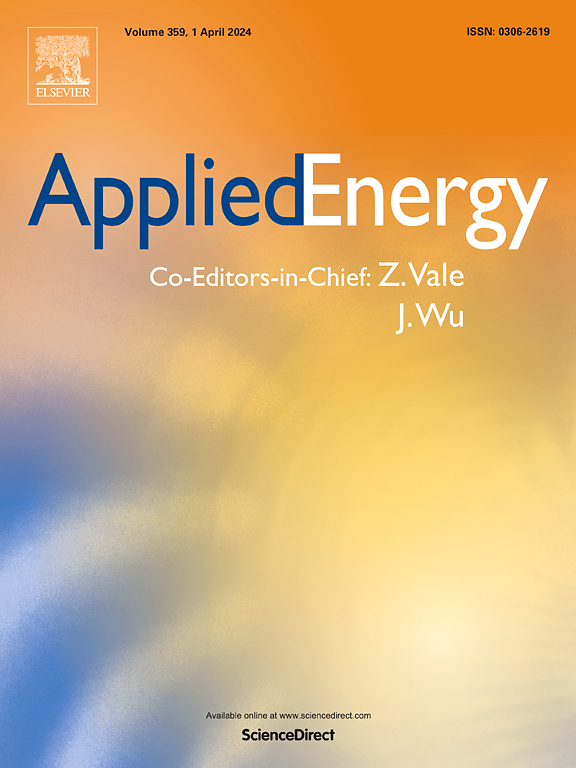Hierarchical multi-time-scale energy management system for secure and economic operation of islanded microgrids with GFM/GFL control
IF 11
1区 工程技术
Q1 ENERGY & FUELS
引用次数: 0
Abstract
The variability of renewable energy sources (RESs) and fluctuating load demands can cause power fluctuations in converter controllers, undermining energy management systems and posing security and economic risks. To address these challenges, this paper proposes a novel hierarchical multi-time-scale energy management system (EMS) to enhance the secure and economical operation of islanded microgrids under hybrid grid-forming (GFM) and grid-following (GFL) controls. The proposed methodology integrates GFM and GFL actions into the secondary and tertiary layers, each optimizing distinct objectives in a convex model to ensure secure and reliable economic power dispatch. Moreover, the proposed framework incorporates an energy management strategy for hybrid energy storage systems with high capacity and power density under different control operations, including unified renewable fuel cells (URFC), while adhering to real-time operational constraints. The secondary layer employs model predictive control (MPC) to address GFM power tracking discrepancies, ensuring short-term voltage and frequency regulation, while the tertiary layer uses mixed-integer linear programming to update power references based on economic and security constraints, particularly ensuring GFM margin compliance. The proposed framework’s effectiveness is validated through MATLAB/Simulink simulations and hardware-in-the-loop testing.
基于GFM/GFL控制的孤岛微电网安全经济运行分层多时间尺度能量管理系统
可再生能源(RESs)的可变性和波动的负载需求可能导致转换器控制器的功率波动,破坏能源管理系统并带来安全和经济风险。为了解决这些问题,本文提出了一种新的分层多时间尺度能量管理系统(EMS),以增强孤岛微电网在电网形成(GFM)和电网跟随(GFL)混合控制下的安全和经济运行。该方法将GFM和GFL行为整合到第二层和第三层,每个层在凸模型中优化不同的目标,以确保安全可靠的经济电力调度。此外,所提出的框架在遵守实时运行约束的情况下,为不同控制操作下的高容量和功率密度混合储能系统(包括统一可再生燃料电池(URFC))纳入了能量管理策略。第二层采用模型预测控制(MPC)来解决GFM功率跟踪差异,确保短期电压和频率调节,而第三层使用混合整数线性规划来更新基于经济和安全约束的功率参考,特别是确保GFM余量符合要求。通过MATLAB/Simulink仿真和硬件在环测试验证了该框架的有效性。
本文章由计算机程序翻译,如有差异,请以英文原文为准。
求助全文
约1分钟内获得全文
求助全文
来源期刊

Applied Energy
工程技术-工程:化工
CiteScore
21.20
自引率
10.70%
发文量
1830
审稿时长
41 days
期刊介绍:
Applied Energy serves as a platform for sharing innovations, research, development, and demonstrations in energy conversion, conservation, and sustainable energy systems. The journal covers topics such as optimal energy resource use, environmental pollutant mitigation, and energy process analysis. It welcomes original papers, review articles, technical notes, and letters to the editor. Authors are encouraged to submit manuscripts that bridge the gap between research, development, and implementation. The journal addresses a wide spectrum of topics, including fossil and renewable energy technologies, energy economics, and environmental impacts. Applied Energy also explores modeling and forecasting, conservation strategies, and the social and economic implications of energy policies, including climate change mitigation. It is complemented by the open-access journal Advances in Applied Energy.
 求助内容:
求助内容: 应助结果提醒方式:
应助结果提醒方式:


